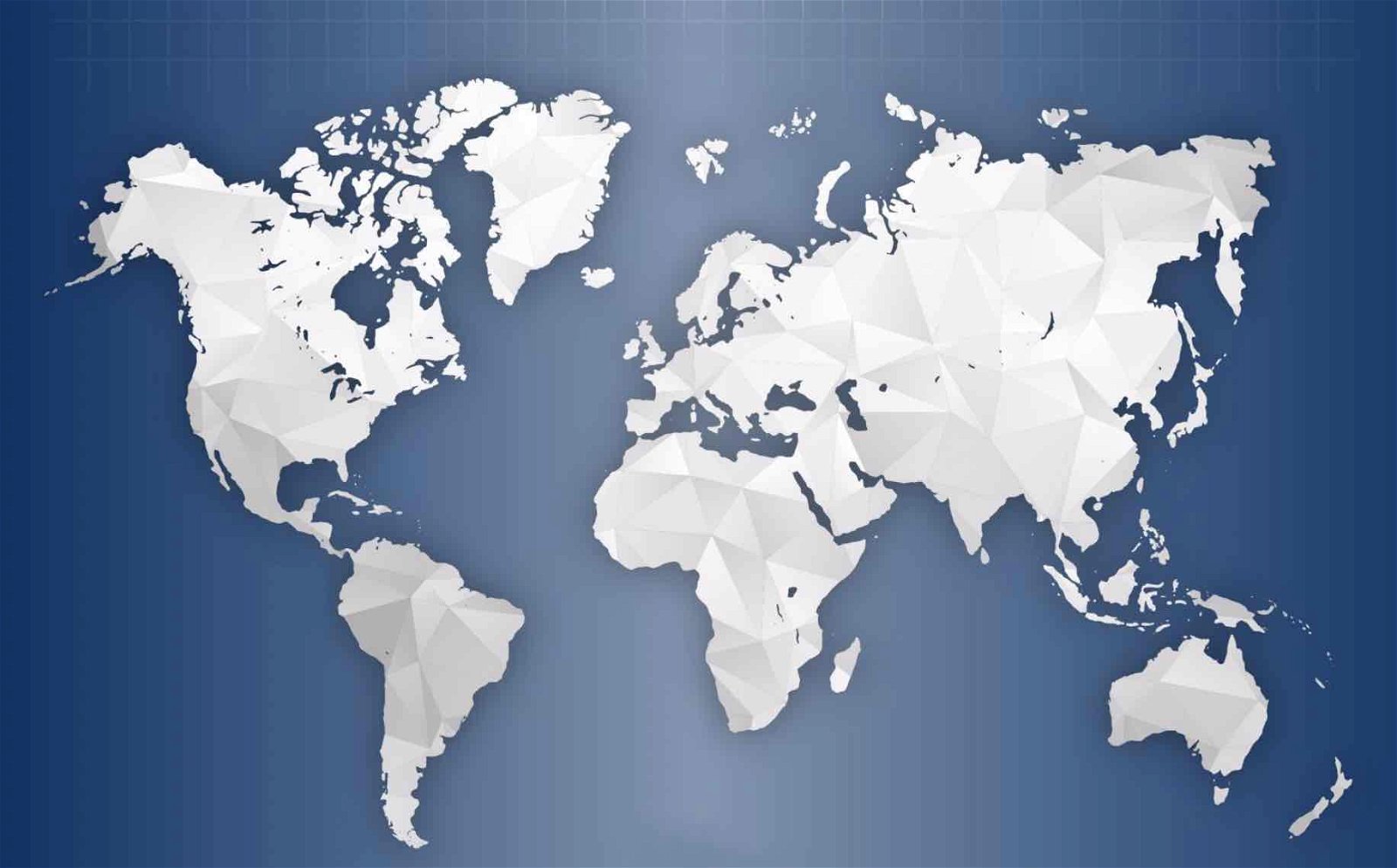

Welcome to this week’s installment of The Intelligence Brief… with the release of an annual report by the Office of the Director of National Intelligence (ODNI) dealing with the Intelligence Commnunity’s threat forecast for the coming year, this week we’ll be analyzing 1) what the scope of the 2023 report entails, 3) key issues related to U.S. foreign adversaries in the report, 3) challenges related to health that could impact global security, and 4) technological and other “transitional” issues the report addresses.
Quote of the Week
“Peace is not merely a distant goal that we seek, but a means by which we arrive at that goal.”
– Martin Luther King, Jr.
Latest Stories: Before getting into our analysis this week, Chris Plain tells us about a naturally-occurring enzyme that helps some forms of bacteria survive in extreme environments and can make electricity out of thin air. Elsewhere, I report on artificially grown masses of cells or tissue known as “organoids” that could represent the next wave of innovation in modern computing. Finally, Tim McMillan gives us the lowdown on why, despite U.S. warnings, global allies appear unconcerned by the implications of adversarial airborne surveillance… a concern that appears to extend to UAP. You can find links to all our recent stories at the end of this week’s newsletter.
Podcasts: This week in podcasts from The Debrief, hosts MJ Banias and Stephanie Gerk tell us how MJ accidentally upset the First Law of Thermodynamics and now it’s ghosting him, and Stephanie contemplates the dawn of the Universe and having her own baby galaxy one day in the latest installment of The Debrief Weekly Report. Elsewhere, on The Micah Hanks Program this week, I caught up with Harvard astronomer Avi Loeb to discuss a recent paper on UAP he coauthored with Dr. Sean Kirkpatrick, director of the DoD’s All-domain Anomaly Resolution Office (AARO). You can subscribe to all of The Debrief’s podcasts, including audio editions of Rebelliously Curious, by heading over to our Podcasts Page.
Video News: Be sure to catch Chrissy Newton’s discussion airing this Friday with CEO and Co-Founder of Electric Sky Robert Millman, who joins Rebelliously Curious to discuss the “Whisper Beam” and the future of faster, cleaner, quieter, and more economical travel. You can also watch past episodes and other great content from The Debrief on our official YouTube Channel.
With all the housekeeping out of the way, we turn our attention now toward the recent 2023 Annual Threat Assessment recently released by the ODNI, what it says, and what that all means.
ODNI Issues the IC’S 2023 Annual Threat Assessment
On Wednesday, the Office of the Director of National Intelligence (ODNI) released its 2023 Annual Threat Assessment of the U.S. Intelligence Community (IC).
The yearly report, which examines the sum total of intelligence gathered and offers a forecast of the most serious threats the U.S. faces over the next twelve months, provides analysis “that policymakers, warfighters, and domestic law enforcement personnel need to protect American lives and America’s interests anywhere in the world.”


With topics that include threats posed by foreign adversaries and their militaries, nuclear proliferation, technological development, biological threats, global terrorism, and more, the report provides insights on areas that require “a robust intelligence response, including those where a near-term focus may help head off greater threats in the future.”
So let’s take a look at a few key areas outlined in the 40-page report and how the issues it covers could potentially affect U.S. national security in the months ahead.
China, Russia, and Issues Abroad
While the authors of the 2023 Annual Threat Assessment note that subjects are not ordered in order of importance, it will come as no surprise that China is the first and, arguably, one of the most significant issues it addresses.
“China’s Communist Party (CCP) will continue efforts to achieve President Xi Jinping’s vision of making China the preeminent power in East Asia and a major power on the world stage,” reads a summary of the IC’s collective intelligence on the country and its activities featured in the report.
“As Xi begins his third term as China’s leader, the CCP will work to press Taiwan on unification, undercut U.S. influence, drive wedges between Washington and its partners, and foster some norms that favor its authoritarian system,” although adding that measures by China to reduce tensions with the U.S. can also be expected when deemed advantageous by the country’s leadership.


The report also addresses Beijing’s “increasingly competitive” relationship with the U.S. as “part of an epochal geopolitical shift” that sees the diplomatic, military, technological, and economic efforts by the U.S. as part of a broader effort aiming “to prevent China’s rise and undermine CCP rule.”
According to the IC’s collective intelligence, China’s military power also continues to grow, although there are a number of issues—economic and otherwise—that present challenges for the country, which include “growing resistance” to the People’s Republic of China’s “heavyhanded (sic) tactics in Taiwan and other countries.” China’s growing military capabilities, technological development (including in fields like artificial intelligence), and spacefaring aspirations, as well as the reorientation of its nuclear posture related to its rivalry with the U.S., are also addressed.
Russia and its regional objectives—namely its ongoing attempted invasion of Ukraine—as well as its global activities, are also a main focus of the ODNI report.
“Russia’s unprovoked war of aggression against Ukraine is a tectonic event,” the report states, which has fundamentally changed the country’s relationship to the Western World, as well as China. “Escalation of the conflict to a military confrontation between Russia and the West carries the greater risk, which the world has not faced in decades,” the report’s authors add.
Although the IC’s assessment of Moscow still deems it to be “formidable” in terms of representing what may at times be unpredictable security challenges, the report also argues that Russia is constrained in multiple areas. Primarily, the country is expected to continue to leverage its assets in regions that include North Africa and the Middle East and utilize what military force it possesses at home in its ongoing efforts against Ukraine, in addition to “pressing to dominate other countries in the post–Soviet space to varying extents.”
“China and Russia will maintain their strategic ties driven by their shared threat perceptions of the United States,” the report’s authors also add. The report also focuses on security challenges and other potential threats posed by other countries, primarily Iran and North Korea, where similar military, technological, and other concerns may arise, albeit to a lesser degree than the U.S.’s chief foreign adversaries Russia and China.
Health Related Challenges
The ODNI report also focuses on COVID-19, which it characterizes as still being “one of the most significant threats to global public health,” in addition to being one of the most costly public health crises to have emerged in decades.
“In addition to direct effects of the pandemic, resultant economic, human security, political, and national security implications of COVID-19 continue to strain recovery efforts, presenting both known and unforeseen challenges that probably will ripple through society and the global economy during the next year and for years to come,” the report states. The assessment comes after the U.S. military began lifting COVID-19 vaccine requirements active personnel earlier this year, noting that many countries around the world remain vulnerable to “the emergence or introduction of a novel pathogen that could cause a devastating new pandemic.”
The ODNI assessment also addressed health concerns related to the use of biological weapons, as well as anomalous health incidents similar to what was previously referred to as “Havana Syndrome” that have been reported by U.S. personnel, mostly at embassies in other countries.
Transitions Toward Tomorrow
A range of other issues are addressed in the annual report, dealing primarily with challenges arising from new technologies, with an emphasis on how trends in “Digital Authoritarianism and Malign Influence” represent the potential for digital information and communication systems to be used for malicious purposes by foreign adversaries, posing issues that could potentially “distort publicly available information and probably will outpace efforts to protect digital freedoms.”
The lasting concern over nuclear proliferation is also addressed in several areas throughout the report, namely with regard to growing numbers of nuclear weapons stockpiles and delivery systems around the globe. This, paired with increasing concerns presented by regional conflicts where nuclear weapons states become involved, “pose a significant challenge to global efforts to prevent the spread and use of nuclear weapons.”
“Arms control efforts through 2035 probably will change in scope and complexity as the number of strategic technologies and the countries that have them grow,” the report’s authors state.


The ODNI assessment also examines challenges that include issues related to migration, crime, and terrorism from groups like ISIS and Al Qaeda, along with the global reach of issues related to the ongoing conflict in Ukraine.
“The combination of elevated energy and food prices has increased the number of individuals facing extreme poverty and food insecurity,” the report’s authors state, “particularly in low-income countries, and these countries will struggle to reverse these trends through 2023, even if global food prices stabilize.”
Altogether, while the focus of the ODNI report is primarily on the impact such issues have in relation to U.S. interests, the global scope of the problems it addresses is evident, particularly with regard to the way that even regional developments involving nations like North Korea or Iran can have much broader sweeping impacts on the global order, and the worldwide security environment, all of which may threaten the U.S. and/or its allies and their national interests.
“In every region of the world,” the report states, “challenges from climate change, demographic trends, human and health security, and economic disruptions caused by energy and food insecurity and technology proliferation will combine and interact in specific and unique ways to trigger events ranging from political instability to terrorist threats, to mass migration, and potential humanitarian emergencies.”
“The IC is vigilant in monitoring and assessing direct and indirect threats to U.S. and allied interests,” the report says, rounding out the ODNI’s 2023 Annual Threat Assessment as a guide for future planning not just for the U.S. and its allies but also in terms of the broader maintenance of strategic global issues worldwide.
That concludes this week’s installment of The Intelligence Brief. You can read past editions of The Intelligence Brief at our website, or if you found this installment online, don’t forget to subscribe and get future email editions from us here. Also, if you have a tip or other information you’d like to send along directly to me, you can email me at micah [@] thedebrief [dot] org, or Tweet at me @MicahHanks.


Here are the top stories we’re covering right now…
- This Extreme Enzyme Makes Electricity Out of Thin Air
A naturally-occurring enzyme that helps some forms of bacteria survive in extreme environments has that seemingly magical ability to make electricity out of thin air.
- Rise of the Organoids: “Brains in a Dish” Could Power a New Wave of Non-Human Intelligence Through Biocomputing
Artificially grown masses of cells or tissue known as “organoids” could represent the next wave of innovation in modern computing, new research says.
- Global Allies Turn a Blind Eye to Adversarial Airborne Surveillance and UAP Despite U.S. Warnings
Despite U.S. warnings, global allies appear unconcerned by the implications of adversarial airborne surveillance or unidentified aerial phenomena.
- “Impossible” Photonic Breakthrough: Scientists Manipulate Light at Sub-Wavelength Scale
In a breakthrough for photonics previously considered impossible, researchers have shown the ability to manipulate microscopic objects with light at the sub-wavelength scale.
- From The Project Blue Book Archives: A Few Lesser-Known UFO Cases From Yesteryear
The U.S. has collected information on aerial objects that, at least in some cases, did not appear to be balloons or “balloon-like entities.”
- Physics of the Phenomenon: A New Scientific Perspective on Aerial Mysteries
Harvard astronomer Avi Loeb joins us to discuss a recent paper he and AARO director Sean Kirkpatrick authored on the physics of UAP.
- Avi Loeb and the DoD’s Chief UAP Investigator Sean Kirkpatrick Say Solving Aerial Mysteries Requires Known Physics
In a new paper, Harvard astronomer Avi Loeb and AARO director Sean Kirkpatrick say that evaluations of UAP must rely on known physics.
- Hubble Telescope Captured the Moment NASA’s DART Spacecraft Smashed Into an Asteroid
NASA says the Hubble Telescope captured images of the space agency’s DART spacecraft as it collided with asteroid Dimorphos last September.
- The Universe Just Broke… This week on The Debrief Weekly Report…
A new tunnel has been found inside the Great Pyramid of Giza, physicists are rewriting the first law of thermodynamics, and our understanding of the universe is thrown into serious question.
- This Futuristic Bandage Can Heal Wounds by Harvesting Electricity Out of Thin Air
Researchers from Northwestern University have developed a “magic” bandage that accelerates healing by harvesting electricity out of thin air.
- Green Energy Game-Changer? The Environmental Benefits of Nuclear Fusion
Now is the time to be looking at the variety of ways nuclear fusion will be beneficial for the environment in the decades ahead.
- Asteroid Discovery Could Shed Light on the Mysterious Origins of Life on Earth
This week we look at how asteroid samples delivered to Earth by a Japanese spacecraft could shed light on the mysterious origins of life on Earth.
- Scientists Find Previously Hidden Corridor Inside The Great Pyramid of Giza
Egyptian Antiquities officials say researchers from the ScanPyramids Project have discovered a previously hidden corridor within the Great Pyramid of Giza
- U.S. Navy Contractor Shows Off Typhoon’s New Anti-Drone Capability
International military contractor Rafael Defense Systems has released a video of their new anti-drone Typhoon weapons platform upgrade
